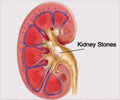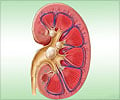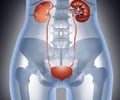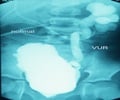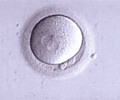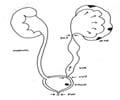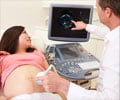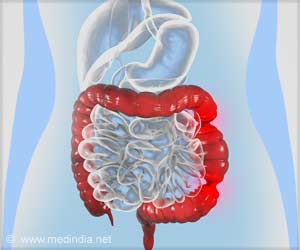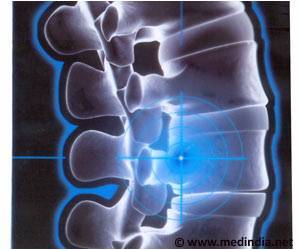Patients experience debilitating pain when kidney stones become stuck in the urinary tract.
A relatively new ultrasound probe procedure has the highest success rate for breaking down kidney stones in the lower "funnel" area of the kidney, rather than the shock wave treatment used for many years, according to a review of studies.However, the reviewers caution that the studies were small, comprising only 214 patients, and the study methodology was of low quality.
The review appears in the latest issue of The Cochrane Library, a publication of The Cochrane Collaboration, an international organization that evaluates medical research. Systematic reviews like this one draw evidence-based conclusions about medical practice after considering both the content and quality of existing medical trials on a topic.
The authors looked at the effectiveness of three minimally invasive procedures: the older treatment, called extracorporeal shock wave lithotripsy (ESWL); the ultrasound procedure, or percutaneous nephrolithotomy (PCNL); and retrograde intrarenal surgery (RIRS), which uses a fiber-optic endoscope.
ESWL, which has been in use since 1980, sends shock waves directly to the kidney stone to break it up so it can pass through the urinary tract.
In the PCNL approach, the surgeon makes a small incision at the person''s back to put the scope into the kidney and then passes a tube into the kidney through which the surgeon can pass a laser ultrasound probe to remove or break the stone into tiny pieces.
The RIRS procedure involves a fiber-optic endoscope placed through the urethra and into the bladder. The scope locates stones, which the clinician can then disintegrate with an ultrasound probe.
Advertisement
The overall success rates of each treatment reviewed did not relate to patients'' age, race or sex.
Advertisement
There are three main funnels in the kidney - upper, middle and lower. The review studies focus on kidney stones in the lower funnel (or lower pole), which drains the bottom third of the kidney''s urine collecting system.
Risk factors for developing kidney stones include "family history, anatomical abnormalities of kidney diseases, (and) medications, such as whether a person is taking calcium supplements or vitamin D supplements," Srisubat said.
Medicine helps some people, but other patients need an alternative approach. With the expanded use of minimally invasive treatments, the need for open surgery to remove stones has decreased.
Glenn Preminger, M.D., of the division of urologic surgery with Duke University Medical Center, routinely performs all three noninvasive forms of stone removal. "All of these treatments work relatively well depending on the size, location and composition of the stone," he said. "For certain stones that are large or are of a hard composition, they may not fragment well with shock wave treatment. For these we prefer to use an endoscopic means of stone removal."
Anthony Smith, M.D., chief of the division of urology at the University of New Mexico School of Medicine, said they also use all three methods compared in the review for kidney stone removal. "My overall impression is that we are using less and less shock wave treatment and more ureteroscopic intervention with the laser. With the new bi-directional ureteroscopes, we are able to treat larger stones in the upper urinary tract with great success," he said.
Smith said that his facility does use shock wave treatment for smaller stones that clearly are visible on film. "But we think we have better success with lower pole stones using either ureteroscopic or percutaneous approaches."
Source-Newswise
RAS

